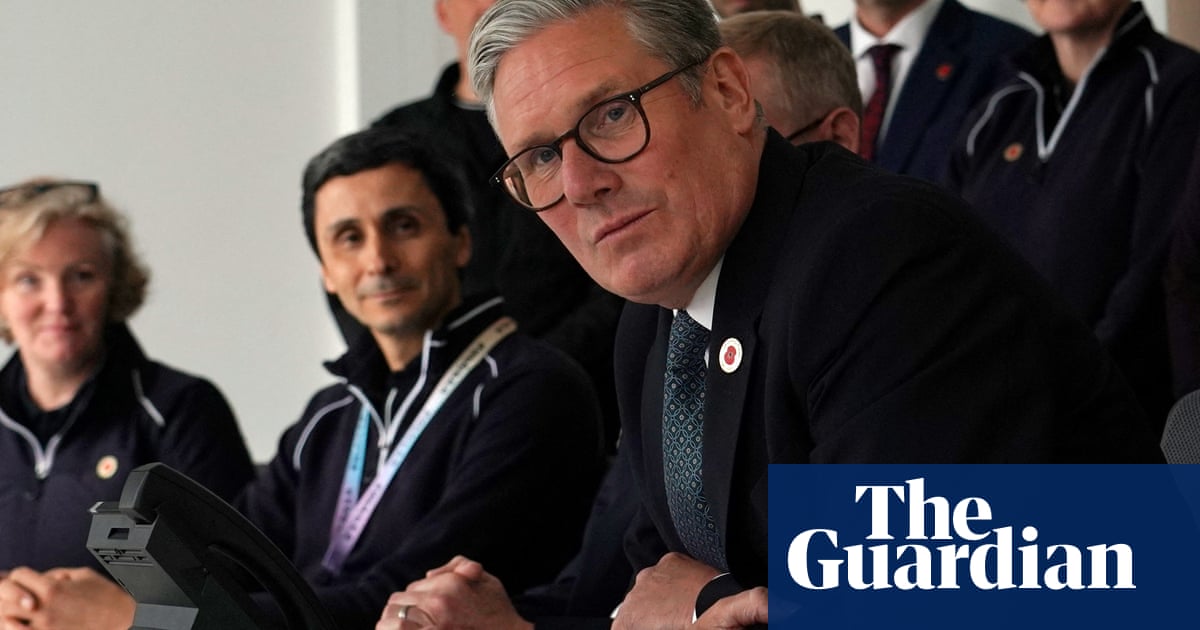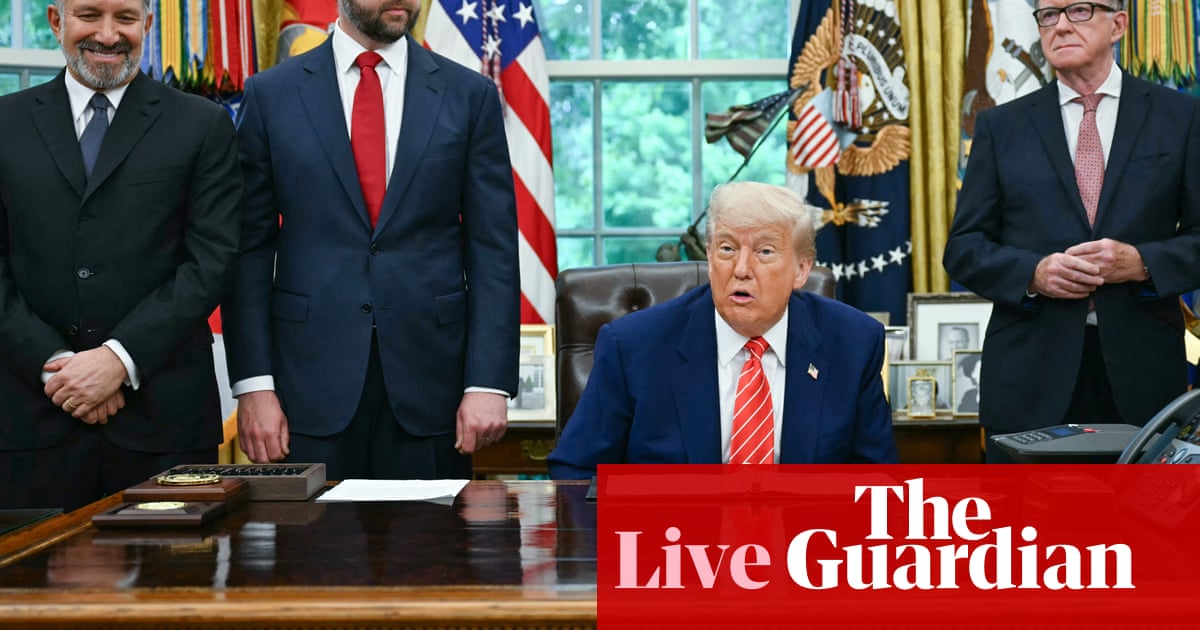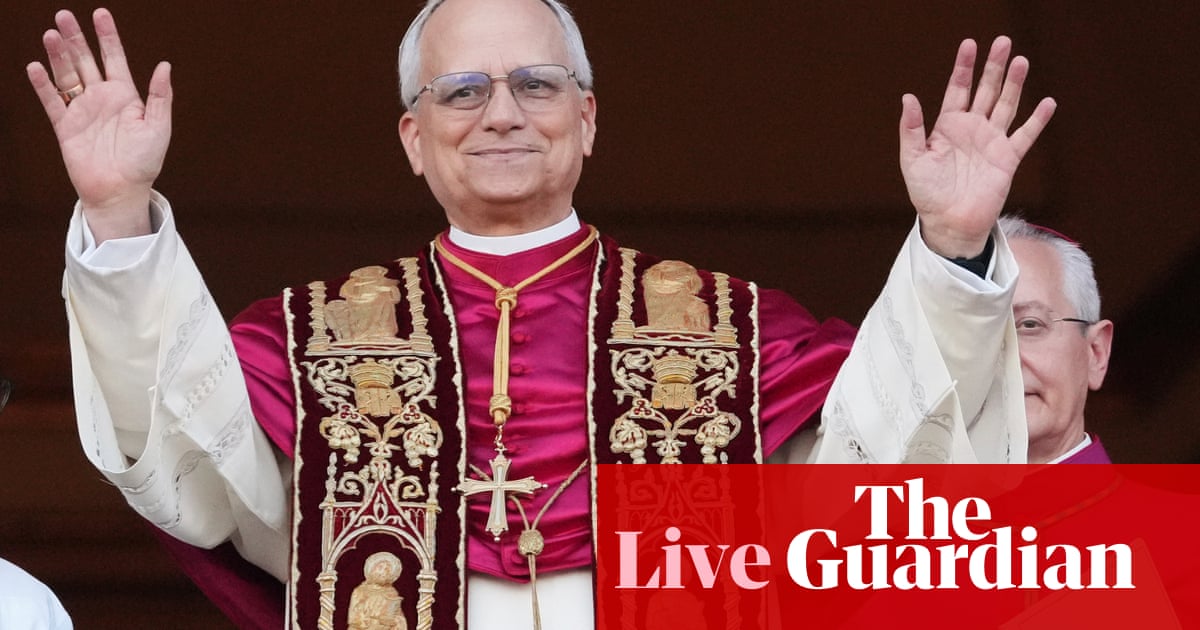The UK economy is fragile, but the agreement might alleviate some of the uncertainty around it. Photograph: Alberto Pezzali/ReutersView image in fullscreenThe UK economy is fragile, but the agreement might alleviate some of the uncertainty around it. Photograph: Alberto Pezzali/ReutersTrade policyAnalysisNew UK/US trade deal is a relief for Starmer but doubts, and tariffs, remainHeather Stewart Economics editorThe deal definitely puts the UK in a better position, but its impact on the wider economy might be limited
Trump and Starmer confirm ‘breakthrough’ US-UK trade deal
Aston Martin and Rolls-Royce share prices soar as manufacturers welcome US tariff cuts
Thu 8 May 2025 19.07 BSTShareThursday’s trade agreement between the US and the UK fell far short of the superlatives heaped on it in Donald Trump’s excruciating televised phone call with Keir Starmer. But it is worth having, nevertheless.As Starmer made clear by appearing in front of an audience of Jaguar Land Rover workers in Solihull, reducing the 27.5% tariff on 100,000 car exports will come as a mighty relief for that industry.Steel and aluminium tariffs will also go completely, according to the UK side – though the fact sheet from the White House stopped short of saying that explicitly, instead saying a “new trading union” would be created in these two sectors.Cars, steel and hormone-fed beef: the key points of the UK/US trade dealRead moreThe 10% across-the-board tariff on all exports remains, but Trump appeared to suggest that will be the case for all countries – so UK goods will not be at any competitive disadvantage.In exchange, the concessions from the British side appeared relatively modest: opening up the market for US agricultural goods, including beef – though only, crucially, if it meets UK food standards – and slashing tariffs on imports of US ethanol. That should prevent Thursday’s agreement cutting across Labour’s hopes for a closer relationship with the EU.Given Trump’s fixation on Beijing, the US also appeared to have been reassured by the fact that the UK has taken control of the Scunthorpe steelworks from its Chinese owners.There was no cut in the digital services tax, which mainly hits US tech firms and had been widely touted as a potential offer to the White House. So the UK appears to have achieved its key negotiating aims with few major concessions. In other words, it is in a better position than last week.But zoom out, and it is clear that with 10% tariffs remaining on all exports to the US, the UK still faces significantly higher trade barriers than before Trump swept to power, determined to tear up the system. In effect, the president has stolen everyone’s lunch money – and is now exacting concessions in exchange for giving a portion of it back.While key UK sectors will be relieved, the wider economy is unlikely to experience much of a bounce. Coincidentally, the Bank of England published its quarterly growth forecasts on Thursday lunchtime, as it announced an interest rate cut to shore up the flagging economy.skip past newsletter promotionSign up to First EditionFree daily newsletterOur morning email breaks down the key stories of the day, telling you what’s happening and why it mattersEnter your email address Sign upPrivacy Notice: Newsletters may contain info about charities, online ads, and content funded by outside parties. For more information see our Privacy Policy. We use Google reCaptcha to protect our website and the Google Privacy Policy and Terms of Service apply.after newsletter promotionThe Bank’s governor, Andrew Bailey, welcomed the prospect of a trade deal; its rate-setting monetary policy committee (MPC) predicted that Trump’s trade policies would shave a fairly modest 0.3% off GDP over the next three years.Most of that, it expects, will result from the general slowdown in global growth as a result of the trade war and policy uncertainty, rather than from the direct tariffs on the UK. In other words, lifting tariffs for the UK, as Trump has now promised to do, is likely to have limited direct upside.The agreement may help to underpin the fragile economy, however, by alleviating some of the uncertainty identified by the Bank as a dampener on consumer and business confidence. It sends a wider signal to the US’s other key trading partners, too, that some of the madder aspects of Trump’s trade policy may be negotiable, if the right degree of flattery is applied.Explore more on these topicsTrade policyEconomic policyAutomotive industryanalysisShareReuse this content










